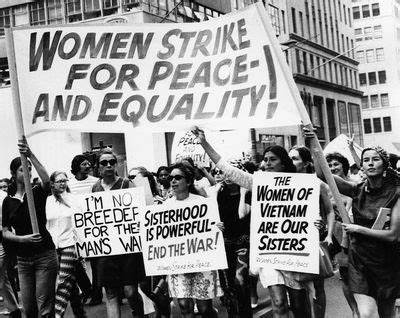Five hundred thousand young Americans did their own thing at the Woodstock music festival in nineteen sixty-nine. They gathered at a farm in New York state. They listened to musicians such as Jimi Hendrix and Joan Baez, and to groups like The Who and Jefferson Airplane. Woodstock became a symbol of the young peoples' rebellion against traditional values. Many young people called themselves "hippies." Hippies believed there should be more love and personal freedom in America. In nineteen sixty-seven, poet Allen Ginsberg helped lead a gathering of hippies in San Francisco. No one knows exactly how many people considered themselves hippies. But twenty thousand attended the gathering.
Another leader of the event was Timothy Leary. "Now, energy comes ..." He was a former university professor and researcher. Leary urged the crowd in San Francisco to "tune in and drop out". This meant they should use drugs and leave school or their job. A young couple dance under a psychedelic light show at "The Electric Circus" nightclub in the East Village in New York, in 1967. The "Electric Circus" embodied the wild and creative side of 1960's club culture. One drug that was used in the nineteen sixties was lysergic acid diethylamide, or LSD. LSD causes the brain to see strange, colorful images. It also can cause brain damage. Some people say the Beatles' song "Lucy in the Sky with Diamonds" was about LSD.
As many Americans were listening to songs about drugs and sex, many others were watching television programs with traditional family values. These included "The Andy Griffith Show" and "The Beverly Hillbillies." At the movies, some films captured the rebellious spirit of the times. These included "The Graduate" and "Doctor Strangelove." "Deterrence is the art of producing, in the mind of the enemy, the fear to attack. And so, because of the automated and irrevocable decision-making process, which rules out human meddling, the Doomsday Machine is terrifying and simple to understand, and completely credible and convincing." "Gee, I wish we had one of them Doomsday Machines." Other films offered escape through spy adventures, like the James Bond films. Many Americans refused to tune in and drop out in the nineteen sixties. They took no part in the social revolution. Instead, they continued leading normal lives of work, family, and home. Others, the activists of American society, were busy fighting for peace, and racial and social justice.

Women's groups, for example, were seeking equality with men. They wanted the same chances as men to get a good education and a good job. They also demanded equal pay for equal work. A widely popular book on women in modern America was called "The Feminine Mystique." It was written by Betty Friedan and published in nineteen sixty-three. The idea known as the feminine mystique was the traditional idea that women have only one part to play in society. They are to have children and stay at home to raise them. In her book, Ms. Friedan urged women to establish professional lives of their own. In the early nineteen sixties, a committee was appointed to investigate the condition of women. It was led by Eleanor Roosevelt. She was a former first lady. The committee's findings helped lead to new rules and laws. The nineteen sixty-four civil rights act guaranteed equal treatment for all groups. This included women. After the law went into effect, however, many activists said it was not being enforced. The National Organization for Women -- NOW -- was started in an effort to correct the problem.
The movement for women's equality was known as the women's liberation movement. Activists were called "women's libbers." They called each other "sisters." Early activists were usually rich, liberal, white women. Later activists included women of all ages, women of color, rich and poor, educated and uneducated. They acted together to win recognition for the work done by all women in America.












